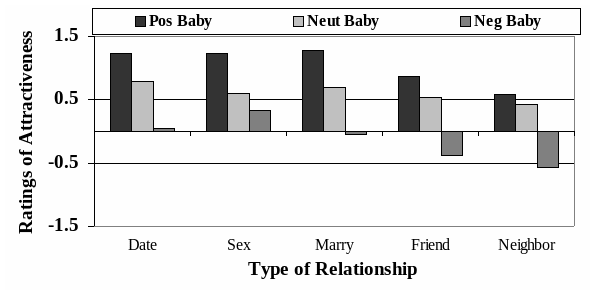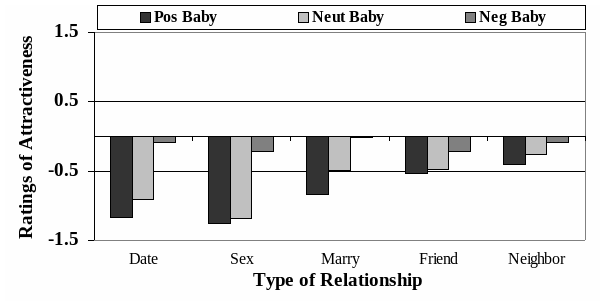ARE THE RESULTS OF LA CERRA (1995) DUE TO
GOVERNMENT’S PARTNER IN ACHIEVING RESULTS LOCKOUT TAGOUT1 IR A HTTPWWWREVERSONETTRANSLATIONRESULTSASPX?LANGES&DIRECTIONINGLESESPANOL BUSCAR TRADUCCIONES Y PRONUNCIACIÓN DE
111387DOC PAGE 3 SCL EDITOR TEST RESULTS TEST
1996 MENÕS CROSS COUNTRY RESULTS DATE HOSTEVENT (DISTANCE) TEAM
1999 FOURTH QUARTER RESULTS ALFA BUY
2 RESULTS FRAMEWORK DOCUMENT 2013 14 DEPARTMENT
Are the results of La Cerra (1995) due to a restricted sample
Are the results of La Cerra (1995) due to a restricted sample?
The general pattern of sensitivity to cues of parental investment (e.g., interactions with a baby) on the part of women, but not men is consistent with the findings of La Cerra (1995). The results found here are also in some ways quite different. The previous study found lower ratings of attractiveness for the housework, helping the elderly, and the two approaching vehicle contexts (as compared to the positive interaction with a baby context), whereas the present study did not find this pattern. There could be several reasons for these different results, but one immediate –and testable—possibility is that the discrepancy is due to somewhat different population samples. The participants in La Cerra (1995) were all university undergraduates at a public research university, and therefore represented a relatively restricted sample (homogeneously young, single, and American). The current research used a population from the internet that was more heterogeneous on all these dimensions.
To assess the effect of the more diverse sample in this study, a subset of the data was constructed by eliminating all participants who did not fit the criteria of being: 1) under 25 years of age, 2) single, and 3) American. Additionally, participants who indicated that they already had graduated from a college or university were also excluded. The resulting subsets (241 women and 108 men) were re-analyzed for the effects found previously. The results were essentially the same as with the full dataset, and a comparison of the figures below with the original data is sufficient to indicate the minor differences. Specifically, the linear trend of the “DPI effect” is actually slightly stronger for females in this subsample, and there appears to be something of a “negative DPI effect” in the male subsample. Positive and neutral interactions with a baby lead to lower ratings of attractiveness from these men.
What is not found in these results is any indication that the difference between the above results and those of La Cerra (1995) are due to differences in participant populations. In the female subpopulation, the positive interaction with a baby context is – as before – not significantly higher than the other (non-baby related) positive contexts. In fact, there were no significant main effects for differences in the attractiveness ratings across contexts, and there were only two small interactions (positive interaction with baby vs. approaching sportscar: (F(2.35, 565.04)=3.28, p=0.031, η2=0. 013, and positive interaction with baby vs. approaching SUV: (F(2.42, 579.78)=2.97, p=0.042, η2=0. 012). Both these interactions were due to models who were approaching a vehicle being rated as more attractive as a date or sexual partner –but less attractive as a marital partner, friend, or neighbor – as compared to models who were positively interacting with a baby.
In the male subpopulation, there were significant main effects comparing the positive interaction with a baby context with all of the other (non-baby related) contexts, and significant contexts x type of relationship interactions for all of these comparisons except with approaching an SUV (analyses available from author upon request). The nature of all the effects are broadly the same: Models in a positive interaction with a baby were rated as less attractive than models in other contexts, particularly for dating, sexual, and (to a somewhat lesser extent) marital relationships.
Age, education, marital status, and nationality-restricted sample of women’s and men’s ratings of attractiveness (controlling for global sex and relationship type differences) across all the contexts
Figure a: Female ratings of male models

Figure b: Male ratings of female models

2 008 COUNCIL ELECTION RESULTS CANLYNIADAU ETHOLIAD Y CYNGOR
2005 QVDA TRACK AND FIELD RESULTS BANTAM BOYS 80MHURDLES
2009 HARDAWAY INVITATIONAL RESULTS (TEAM INDIVIDUAL) TEAM SCORES NORTHVIEW
Tags: (1995) due, cerra (1995), (1995), cerra, results
- CHROMATOGRAPHY OF PHOTOSYNTHETIC PIGMENTS STUDENTS’ SHEET INTRODUCTION THE
- Pergub_1991_155
- AYUNTAMIENTO DE ORIHUELA EXPEDIENTE Nº 197642017 ASUNTO CONVOCATORIA DE
- IS THE CHURCH LISTENING TO WHAT CHILDREN SAY?
- prestamohipotecarioparticulares
- 6 TRUE ROMANCE BY DAVE CARLEY CAST (IN ORDER
- INTERNATIONALT ARBEJDSGRUPPEMØDE D 12 OKTOBER 2010 DELTAGERE KJELD S
- DOW UNIVERSITY OF HEALTH SCIENCES RESEARCH DEPARTMENT RESEARCH FACILITATING
- APT RAPPORTEUR ON ITUR RESOLUTION [CRS] 20120118 DRAFT NEW
- NOVEDADES SOBRE ALGUNOS NOMBRES DE PLANTAS EN EUSKERA JOSÉ
- LOS ALUMNOS DE 4º A 6º DE PRIMARIA DE
- ESTRUCTURA AGRARIA EN ESPAÑA ANALIZAR LA RENTA NACIONAL
- LEADERSHIP MODULE OUTLINE ALL COMMUNITIES MODULE 1 OF 1
- FONS CATALÀ DE COOPERACIÓ AL DESENVOLUPAMENT FORMULARI D’INFORME DE
- U NIT PLAN TEMPLATE NOTE TYPE IN THE
- UNIVERZA V LJUBLJANI FAKULTETA ZA DRUŽBENE VEDE MAG JASMINKA
- JUOZO TUMOVAIŽGANTO MEMORIALINIO BUTOMUZIEJAUS AUDIOGIDAS JUOZO TUMOVAIŽGANTO MEMORIALINIS BUTASMUZIEJUS
- SCREENING CENTRE FOR OUTPATIENT ENDOSCOPY SCOPE CLINIC 12470 CHRYSLER
- NAME CLASS DATE TOTAL POINTS UNIT 13
- DAVID A KOLB ON EXPERIENTIAL LEARNING DAVID A
- DECLARAÇÃO DECLARO PARA FINS DE CONCESSÃO DE BOLSA DE
- 1003 PDT MARY MCRAE ANNOUNCES THAT THE KMIP TC
- STICHTING HORST EN WEIDE SMARAGDHORST 324 2592 RX DEN
- STEPHEN M MAJERCIK 6 NOVEMBER 2021 STEPHEN M MAJERCIK
- RESULTADO DEL SEGUNDO EJERCICIO DEL PROCEDIMIENTO SELECTIVO CELEBRADO PARA
- USER’S MANUAL FOR THE LAPANIMAL USE QUALIFICATION (AUQ) WEBBASED
- PRESS RELEASE NOVEMBER 21 2011 MOULD SECTOR IS MEETING
- SILABUS MATA KULIAH SISTEM PENUNJANG KEPUTUSAN FAKULTAS ILMU
- ELECTRICAL SAFETY ACT PASSED 22 MAY 2002 (RT1 I
- 4 TD13386973 OPINIÓN Nº 1582018DTN ENTIDAD JURADO NACIONAL DE
 475599.ekoloski_otisak_-_kako_je_razvoj_zgrazio_odrzivost
475599.ekoloski_otisak_-_kako_je_razvoj_zgrazio_odrzivost SUCESOS LA POLICÍA FORAL DETIENE A 25 CONDUCTORES EN
SUCESOS LA POLICÍA FORAL DETIENE A 25 CONDUCTORES EN I NZQA APPROVED NTERNAL ASSESSMENT RESOURCE SCIENCE 18B V4
I NZQA APPROVED NTERNAL ASSESSMENT RESOURCE SCIENCE 18B V4 ΥΠΟΥΡΓΕΙΟ ΕΞΩΤΕΡΙΚΩΝ ΓΡΑΦΕΙΑ ΟΙΚΟΝΟΜΙΚΩΝ & ΕΜΠΟΡΙΚΩΝ ΥΠΟΘΕΣΕΩΝ ΣΥΣΤΗΜΑ ΔΙΑΧΕΙΡΙΣΗΣ
ΥΠΟΥΡΓΕΙΟ ΕΞΩΤΕΡΙΚΩΝ ΓΡΑΦΕΙΑ ΟΙΚΟΝΟΜΙΚΩΝ & ΕΜΠΟΡΙΚΩΝ ΥΠΟΘΕΣΕΩΝ ΣΥΣΤΗΜΑ ΔΙΑΧΕΙΡΙΣΗΣRECOMMENDATIONS ON THE PROPOSALS OF TRAVEL SUPPORT EXHIBITION &
 SISTEMA FISCAL I GUIA DESTUDI 2 PRESSUPOST PÚBLIC
SISTEMA FISCAL I GUIA DESTUDI 2 PRESSUPOST PÚBLIC VII TRIATLON CROS LA ESTANCA DE ALCAÑIZ CLASIFICACION MASCULINA
 EGGS & CHILD NUTRITION PROGRAMS CHILD NUTRITION PROGRAMS SERVING
EGGS & CHILD NUTRITION PROGRAMS CHILD NUTRITION PROGRAMS SERVINGNIVEAU A2 ELVIS PRESLEY NAME TRUE OR FALSE
WARTOŚĆ AKTYWÓW MGR ANNA WIELICKA WIELICKAAUPOZNANPL NASZE PIENIĄDZE KTÓRE
 INSTYTUCJA FILMOWA „SILESIAFILM” W KATOWICACH OGŁASZA NABÓR WNIOSKÓW DO
INSTYTUCJA FILMOWA „SILESIAFILM” W KATOWICACH OGŁASZA NABÓR WNIOSKÓW DODERECHOS HUMANOS DE LAS MUJERES BUENAS PRÁCTICAS EN LA
PREFETTURA DELLA CASA PONTIFICIA MODULO PER LA PRENOTAZIONE DEI
DIV ALIGNCENTER RESOLUCION EXENTA Nº 3207 DEL 28 DE
 ALLOCATE BY PERCENTAGE ON VOUCHERS PURPOSE THERE ARE TWO
ALLOCATE BY PERCENTAGE ON VOUCHERS PURPOSE THERE ARE TWO CONTRATO DE TRABALHO PELO PRESENTE INSTRUMENTO DE
CONTRATO DE TRABALHO PELO PRESENTE INSTRUMENTO DE POWERPLUSWATERMARKOBJECT3 PAN KLEKS CZ 1 JAN BRZECHWA AKADEMIA PANA
POWERPLUSWATERMARKOBJECT3 PAN KLEKS CZ 1 JAN BRZECHWA AKADEMIA PANA 3GPP TSG GERAN ADHOC 2 ON R2000 AND BEYOND
3GPP TSG GERAN ADHOC 2 ON R2000 AND BEYONDUTM DEPARTMENT OF NURSING BACHELOR OF SCIENCE IN NURSING
 0 (3) SE851 81 SUNDSVALL SWEDEN +46 771 670
0 (3) SE851 81 SUNDSVALL SWEDEN +46 771 670